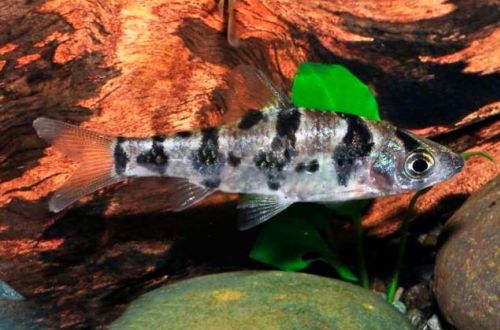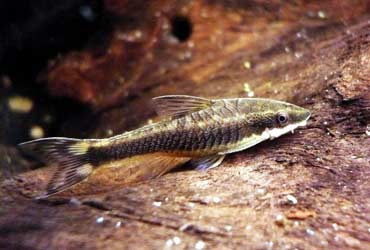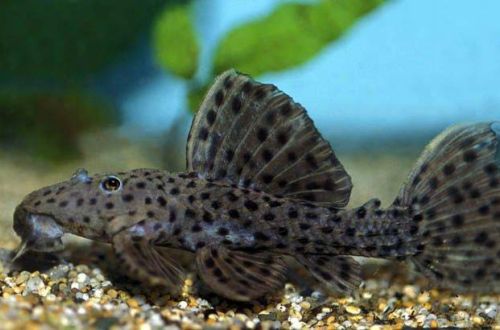
Barbus Barbus
The barred barb, scientific name Desmopuntius foerschi, belongs to the family Cyprinidae (Cyprinidae). A peaceful, active fish that can be a great addition to a community of other freshwater species. Easy to keep and unpretentious, can be recommended to beginner aquarists.

Contents
Habitat
It comes from one of the largest islands in Southeast Asia – Kalimantan. Inhabits swamps and related rivers, streams flowing under the canopy of tropical forest. The natural habitat is characterized by predominantly stagnant waters saturated with tannins from decaying plant organic matter, giving the water a brown tint. Depending on the terrain, the substrates may consist of peat, mud or sand.
Brief information:
- The volume of the aquarium – from 80 liters.
- Temperature – 20-28°C
- Value pH — 5.0–7.0
- Water hardness – 1–10 dGH
- Substrate type – any dark
- Lighting is weak
- Brackish water – no
- Water movement is weak
- The size of the fish is about 5-5,5 cm.
- Feeding – any food of suitable size
- Temperament – peaceful
- Content in a group of 10 individuals
Description
Adults reach a length of up to 5 cm. The color is silvery with rows of uneven vertical stripes and specks. Fins and tail are translucent. Sexual dimorphism is weakly expressed, males are practically indistinguishable from females. The latter are somewhat larger, which is especially noticeable during the spawning period.
Food
Unpretentious omnivorous fish, gladly accept most popular foods. The quality and composition of the feed directly affect the color and health of the fish, so it is recommended to use products from well-known and trusted manufacturers.
Maintenance and care, arrangement of the aquarium
The optimal size of the aquarium for a small flock of these fish starts from 80 liters. The design uses snags, dark soil and a large number of shade-loving plants, including floating ones. The lighting is subdued. The addition of dried leaves will give a natural look to the design, as well as saturate the water with tannins typical of the Barb’s habitat. Read more in the article “Which tree leaves can be used in an aquarium.”
Successful management is largely dependent on maintaining stable water conditions with suitable hydrochemical values. Aquarium maintenance includes several standard procedures: weekly replacement of part of the water (about 20% of the volume) with fresh water, regular removal of organic waste (food residues, excrement), equipment maintenance, monitoring of pH / dGH / oxidizability parameters.
Since the fish originate from water bodies with a weak current, when choosing a filter, preference should be given to filter models that do not cause excessive movement of water.
Behavior and Compatibility
Peaceful schooling fish, able to get along with many other species of comparable size. It is worth avoiding overly active and even more aggressive neighbors in the aquarium. It is recommended to purchase a heterosexual group of at least 8-10 individuals.
Fish diseases
In a balanced aquarium ecosystem with species-specific conditions, diseases rarely occur. Diseases are caused by environmental degradation, contact with sick fish, and injuries. If this could not be avoided, then more about the symptoms and methods of treatment in the section “Diseases of aquarium fish”.





